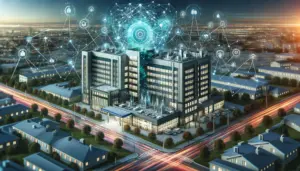Color Temperature For LED Displays
What Is Color Temperature
Yes, colors can have a temperature, yet in the case of color measurement, temperature has more to do with wavelengths than physical heat or cold. Color temperature is a characteristic of visible light. It is the measurement of what temperature the color needs to be to have an ideal black-body radiator, often referred to as the measurement of “whiteness” of a light source. Color temperature may not be a topic of everyday conversation for you, but it’s an important component of a variety of visual applications, including LED video displays.
Cool & Warm Colors
Color temperature is relative to a small spectrum of colors. Hues that have color temperatures include the red and orange spectrum via yellow as well as white to bluish white. Color temperature is expressed in Kelvin, which is based on an absolute thermodynamic temperature scale.
It may seem strange to assign light a temperature. After all, light, by itself, is not necessarily something that heats up or cools down. However, when heat or cold are applied to materials, changes in color do occur. Think about how when coils heat up, they glow red. When you raise the temperature even higher, the coils could turn white and eventually blue. Thus, while red is hot, blue is even hotter – even though blue is traditionally considered a “cool” color.
That’s Interesting, But Is Color Temperature Really That Important?
Without color temperature, two sources of light with small differences would be hard to differentiate. So, this scale and its Kelvin number act as a way to give context to similar colors. With an LED display, the LEDs are the light emitters. The screen is the light source. Because of the properties of light, color temperature, and the design of the panels, viewers of LED enjoy more colors than viewers of traditional projection.
Pro Tip: Take advantage of this attribute when designing content, as a greater range or contrast of colors offers a more engaging experience. LED displays can create the appropriate lighting for any setting—as we all know a setting can very much influence how the screen looks to those engaging with it. Even the lack of color, black, is blacker on LED screens.
How do we get all the colors?
Clusters of LEDs combine red, green and blue sources to blend light into millions of distinct colors. When different colors are added or mixed together in varying amounts in these clusters, hues are created. Color perception depends on a given light’s brightness, referred to as luminance, and chromaticity (or color) in terms of the dominant wavelength viewed. Hues may have similar wavelengths but different luminances or vice versa – creating a very wide color palette. Because of these differences, every color will have a unique measurement.
In light mixing, the areas that matter in color space are chromacity and flux, which is an additive metric. The RGB color model, itself, is additive, meaning the three light beams are added together to make the final color’s spectrum. In the end, light is color and color is light. Light Emitting Diodes (LEDs) can handle the color mixing, flux, and luminence – and even match the color temperature to the environment.
Color Is a Science
It’s amazing to think that these small little lights can turn into dramatic content with a measurable impact on viewers. At Neoti, we believe it’s important to share technical information so that you can build a better LED video wall.
Read more at neoti.com








